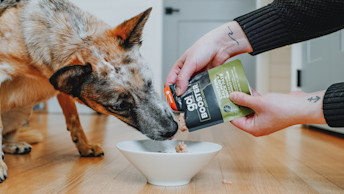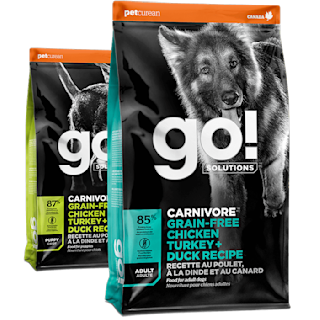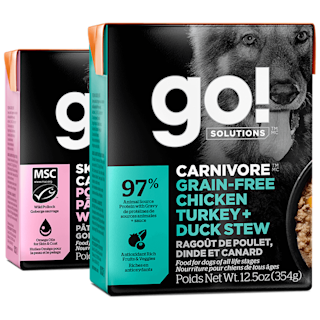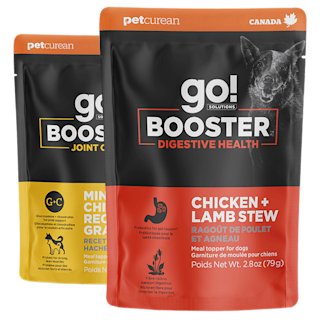January 21, 2025
What You Can Add to Dog Food for Weight Gain

When it comes to helping your dog gain weight, it’s essential to approach the task thoughtfully. Whether your dog has been ill, is naturally underweight, or just needs to bulk up a bit, there are safe and effective ways to support their weight gain without compromising their overall health. However, before making changes to your dog’s diet, it’s important to consult your veterinarian to rule out any underlying health issues.
Why Might a Dog Need to Gain Weight?
A dog may need to gain weight for several reasons, such as recovery from illness, a history of malnutrition, or being underweight due to a high-energy lifestyle. Knowing why your dog is underweight will guide you in choosing the right approach to increase their calorie intake.
Always discuss your dog’s condition with a veterinarian to ensure you’re addressing the root cause appropriately.
1. Add High-Calorie Dog Food for Weight Gain
Choosing a nutrient-dense, high-calorie dog food is the first step. Look for options labeled specifically for weight gain or active dogs, as they often contain higher fat and protein levels to provide more calories per bite.

Recommended Solution
Go! Solutions Carnivore Protein-Rich Dog Food
Perfect for high-energy dogs, these meaty recipes are protein-packed with 6-11 animal proteins per recipe.
Carnivore dog food
If switching your dog’s food isn’t an option, consider mixing in calorie-dense additions to their regular meals. This can make their bowl more appealing and caloric without a complete diet change.
2. Add Wet Food or Food Toppers
Wet food and food toppers can be a great addition to your dog's diet for extra calories. Wet food is often more calorie-dense than kibble and easier for dogs to eat, especially if they have dental issues or reduced appetite. Mixing wet food with their regular dry food can also make meals more enticing.

Recommended Solution
Go! Solutions Wet Dog Food Recipes
Delight your canine companion with Go! Solutions wet dog food. Made with high-quality animal proteins and antioxidant-rich ingredients for wholesome nutrition.
View wet dog food
Food toppers are designed to be an addition to your dog’s regular diet, and can offer additional calories and nutrients.

Recommended Solution
Go! Booster Dog Food Topper
Elevate your dog's meals with Go! Booster dog food toppers. Offered in a variety of mix-and-match flavours and health focuses to level-up mealtime.
View dog food toppers
3. Include Additional Healthy Protein Sources
Protein is a key component of muscle development, and adding extra protein to your dog’s meals can help them gain weight healthily.
Some great options include:
- Cooked meats like chicken, turkey, or lean beef (without seasoning or added fats).
- Eggs, which are rich in protein and easy to digest for most dogs.
- Fish like salmon or sardines, which provide protein and healthy omega-3 fatty acids.
These additions not only boost calories but also provide essential nutrients to support your dog’s overall health.
Always check with your vet before introducing new proteins, especially if your dog has known allergies or sensitivities. Ensure additions to your dog meal never exceed 10% of your dog’s daily caloric intake.
4. Incorporate Healthy Fats
Fats are an excellent source of calories and can be an easy way to add density to your dog’s meals.
Some safe options include:
- Fish oil or salmon oil, which can support skin, coat, and joint health.
- Coconut oil, a tasty addition that can support good digestion.
- Peanut butter, as long as it’s xylitol-free. Peanut butter is not only high in calories but also loved by most dogs, making it a great option for picky eaters.
As with any dietary change, consult your veterinarian to ensure these fats are appropriate for your dog’s specific health needs. Introduce new foods in small amounts and don’t exceed 10% of your dog’s daily caloric intake.
5. Add Carbohydrate-Rich Foods
Complex carbohydrates can provide sustained energy and additional calories.
Some dog-safe options include:
- Sweet potatoes or yams, cooked and mashed for easy digestion.
- Rice or oatmeal, which can be especially helpful for dogs with sensitive stomachs.
- Pumpkin puree, which is both calorie-dense and excellent for digestion.
Discuss these options with your vet to ensure they align with your dog’s dietary requirements. Introduce new foods slowly and don’t exceed 10% daily caloric intake.
Monitor and Adjust
As you work on helping your dog gain weight, keep an eye on their progress. Regularly weigh your dog and assess their body condition to ensure they are gaining weight at a healthy rate. If you don’t see progress, consult your veterinarian for advice tailored to your dog’s specific needs.
Things to Avoid
While adding calories to your dog’s meals, it’s important to avoid foods that could harm their health.
Be sure to avoid:
- Foods high in salt or sugar, as these can cause long-term health issues.
- Highly processed human foods, which may contain harmful ingredients.
- Overfeeding treats, as they can upset the nutritional balance of your dog’s diet.
Final Thoughts
Helping your dog gain weight can feel challenging, but by incorporating the right foods and monitoring their progress, you can achieve your goal safely. Whether it’s adding high-quality protein, healthy fats, or calorie-rich carbohydrates, each meal can be a step toward a healthier weight.
Always remember to consult your veterinarian before making significant changes to your dog’s diet to ensure their overall well-being.
By focusing on how to put weight on a dog in a balanced and nutritious way, you’ll not only support their physical health but also improve their quality of life. Start making small changes today to see big results tomorrow!



